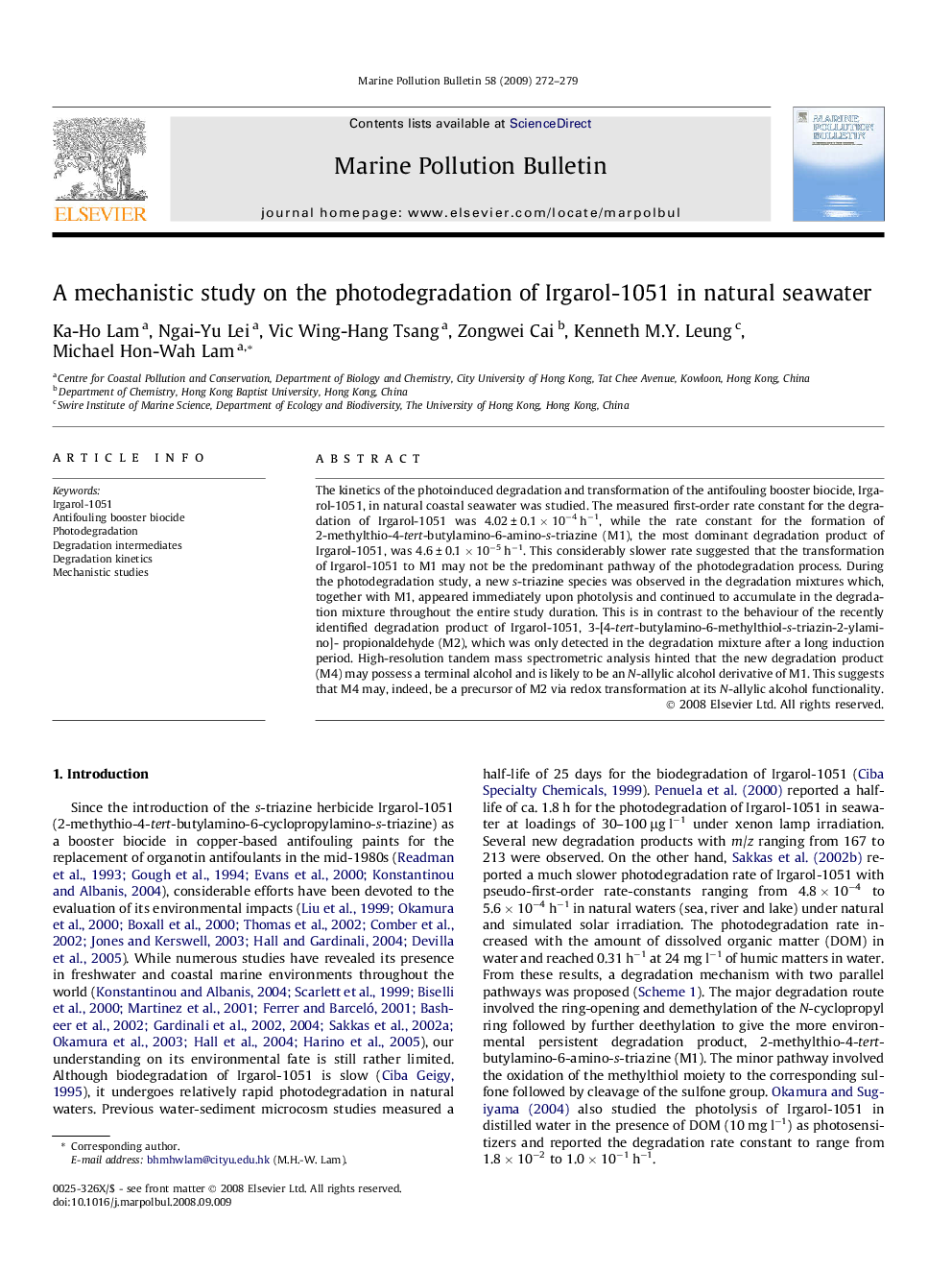| Article ID | Journal | Published Year | Pages | File Type |
|---|---|---|---|---|
| 4477130 | Marine Pollution Bulletin | 2009 | 8 Pages |
The kinetics of the photoinduced degradation and transformation of the antifouling booster biocide, Irgarol-1051, in natural coastal seawater was studied. The measured first-order rate constant for the degradation of Irgarol-1051 was 4.02 ± 0.1 × 10−4 h−1, while the rate constant for the formation of 2-methylthio-4-tert-butylamino-6-amino-s-triazine (M1), the most dominant degradation product of Irgarol-1051, was 4.6 ± 0.1 × 10−5 h−1. This considerably slower rate suggested that the transformation of Irgarol-1051 to M1 may not be the predominant pathway of the photodegradation process. During the photodegradation study, a new s-triazine species was observed in the degradation mixtures which, together with M1, appeared immediately upon photolysis and continued to accumulate in the degradation mixture throughout the entire study duration. This is in contrast to the behaviour of the recently identified degradation product of Irgarol-1051, 3-[4-tert-butylamino-6-methylthiol-s-triazin-2-ylamino]- propionaldehyde (M2), which was only detected in the degradation mixture after a long induction period. High-resolution tandem mass spectrometric analysis hinted that the new degradation product (M4) may possess a terminal alcohol and is likely to be an N-allylic alcohol derivative of M1. This suggests that M4 may, indeed, be a precursor of M2 via redox transformation at its N-allylic alcohol functionality.
